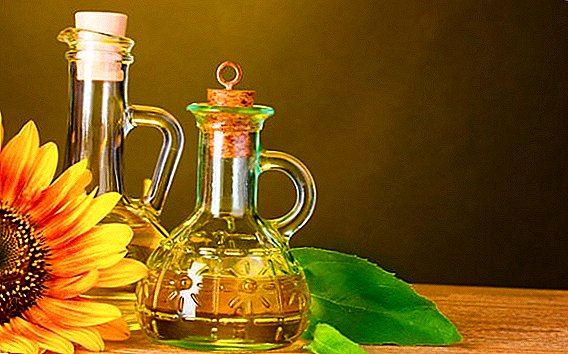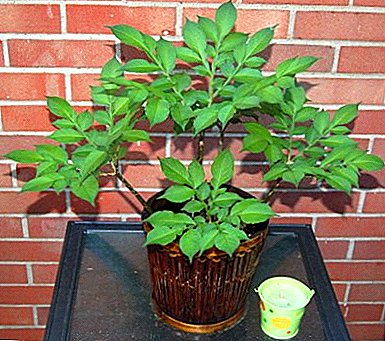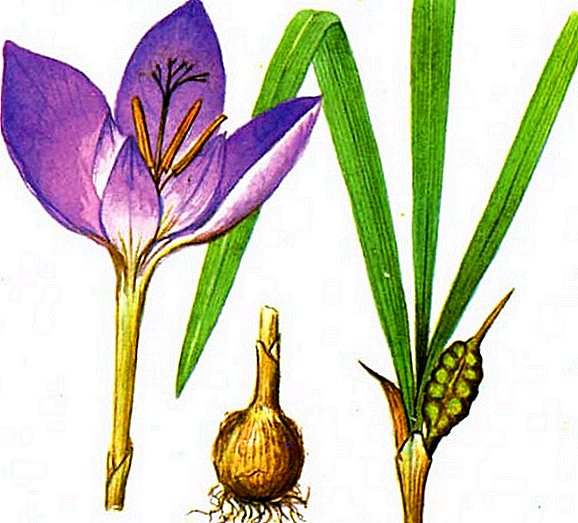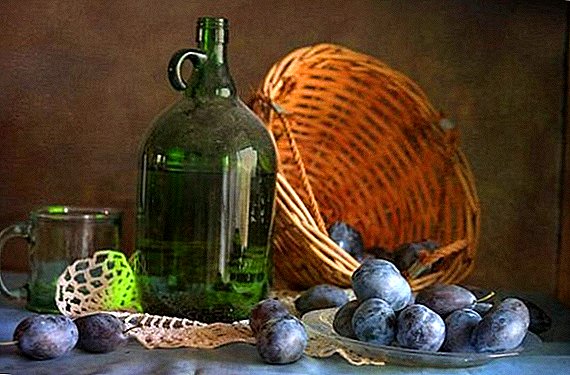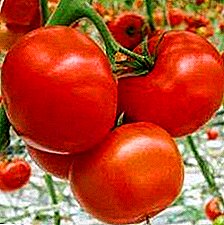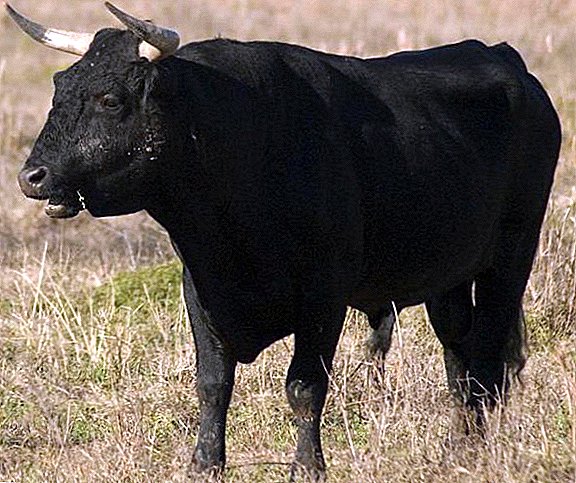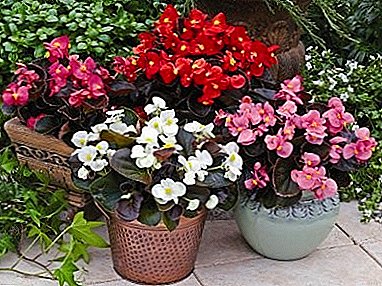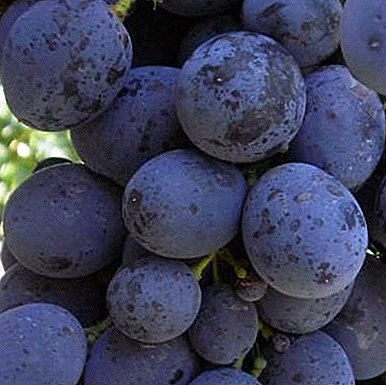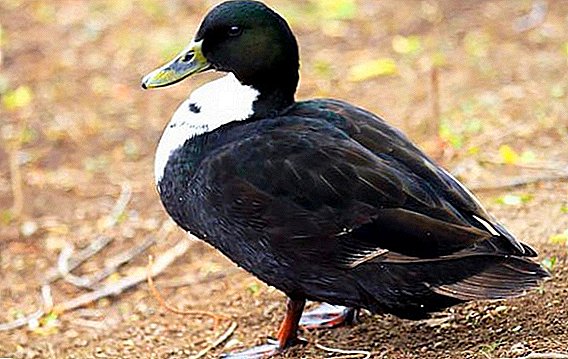 In the world there are more than a hundred breeds of ducks.
In the world there are more than a hundred breeds of ducks.
These birds are very popular among poultry farmers, giving way to superiority only to chickens.
In our article we will talk about the breed with Ukrainian roots - black white-breasted duck.
Breed history
The white-breasted black duck breed was created by employees of the Poultry Institute of the Ukrainian Academy of Agrarian Sciences. For its breeding, 3 breeds were used: Peking, Ukrainian white-breasted, and khaki-campbell. 
Description and appearance
Characteristic external signs of white breasts are:
- torso - massive, slightly raised;
- the back is long, wide, sloping towards the tail;
- rib cage - large and concave;
- the head is small;
- the neck is long;
- beak - short, dull, curved down, black;
- wings - large, sweeping, tight to the body;
- legs - short, located close to the back;
- tail - small, raised at the base;
- eyes - big and black;
- plumage. The main color is black, white on the chest. The neck of the males is greenish.
Did you know? The ancient Sami believed that all four living things came out of four eggs laid by a duck: from the first — rivers and plants, from the second — birds, from the third — animals, and man — from the fourth.
Productive qualities
When creating a black white-breasted duck, the aim was to obtain a breed with high egg-laying rates and good weight properties.  The result was birds with such characteristics:
The result was birds with such characteristics:
- quick weight gain (at the age of 2 months, the ducks weigh about 2 kg and are ready for slaughter);
- at 6 months, the females already have eggs and are ready to mate, just like the males;
- the weight of the drake is about 4 kg, and the duck is 3.4-3.5 kg;
- egg production rate ranges from 110 to 130 pieces per year and does not decrease for several years;
- egg weight - from 85 g to 100 g. Color - white;
- survival rate of young - about 93%.
Conditions of detention
A duck is a waterfowl and for its content it is desirable to have a reservoir, or at least a small water tank.
Did you know? According to the beliefs of the Mari (one of the numerous nationalities inhabiting Russia), the duck is the parent of the world that laid a huge egg - the Earth.
Room Requirements
For the maintenance of a large number of birds, it is desirable to equip a special chicken house - brodergauz. This is a room with separate sections, where the ducks are not locked in cages, but move freely and go out through the manholes made in the walls.  In the house you need to create certain conditions:
In the house you need to create certain conditions:
- The floor is covered with sawdust or hay, but better with peat, which absorbs moisture well. Initially enough litter is 10-15 cm thick, and then gradually the layer is poured and becomes thicker. Be sure to increase the thickness of the litter to the cold.
- Cold waterfowl destructive. The first 15 days of ducklings contain at temperatures from +25 to +30 ° C, later it is reduced to + 18 ... +20 ° C. The room is heated with electric heaters (brooders). Under one such device fits up to 500 ducks.
- Good ventilation is necessary, but without drafts, which are destructive not only for chicks, but also for adults.
- In the summer, there is enough natural light, and in spring and autumn it is necessary to artificially extend the backlight for a couple of hours.
- Nests are placed in the dark along the walls. Metal feeders are suitable for liquid feed, and for dry feed - wooden.
Important! Ducks do not belong to clean animals, therefore it is better for them to make high feeders and fill the feed with a third part so that the birds litter less. And narrow troughs are necessary so that only the bird's beak fits.
Courtyard for walking
At the age of three weeks ducklings can be released into the pen. In order for the birds to hide from the scorching sun or from the weather, there should be a shed on the walking area, also drinkers and feeders should be equipped. The courtyard should not be cramped: 1 square. m - no more than 5 individuals.  At the age of one and a half months, birds should be released to the reservoir, where they will find additional food in the form of small fish, tadpoles, algae and other food. This will allow them to get additional vitamins and minerals, and the owner will help save on feed.
At the age of one and a half months, birds should be released to the reservoir, where they will find additional food in the form of small fish, tadpoles, algae and other food. This will allow them to get additional vitamins and minerals, and the owner will help save on feed.
Also, bathing itself has a beneficial effect on the duck's body.
It will be useful for you to learn how to make a barn for ducks with your own hands, how to make feeders and drinkers yourself for ducks, as well as how to make a variety of drinkers for ducklings.
What to feed
Ducks can not be called fastidious animals in terms of food, but for the birds to be healthy and the meat tasty, you need to know what they should be fed. The summer ration differs a little from the winter one.
Adult ducks
In the summer, waterfowl free-range themselves feed themselves and make their diet more diverse, but they still need to be fed twice a day with grain mixtures (millet, oats, barley).
But in the winter, so that the birds do not suffer from vitamin deficiency, vitamins and minerals should be added to the feed.
Their regular diet should include such foods:
- cereals, preferably several species (barley, wheat, corn, etc.), give from 40 to 50% of the total weight of feed;
- legumes (soybeans or peas) in an amount of about 10% in ground form is added to the mash beans;
- vegetables and herbs mixed in food about 10-15% of the total mass;
- fish and bone meal, egg shells or crushed shells are mixed into the feed in the amount of 5-10% of the total feed;
- dry milk and technical fat in a small amount sprinkled into wet food;
- vitamin complexes (given according to the instructions).
 In the summer, the bird is fed twice a day, and in the winter - three times.
In the summer, the bird is fed twice a day, and in the winter - three times.Learn how to properly feed adult ducks and ducklings.
Ducklings
Hatched chicks have their own special diet:
- in the early days, young animals are fed with finely chopped boiled eggs;
- curd and oatmeal, corn or barley porridge are added in a couple of days;
- for 5 days - chopped greens;
- on day 10, half of the grain feed can be replaced with boiled potatoes.
Important! Ducks quickly gain weight and grow fat. To get tender and dietary meat they can not be overfed. A couple of weeks before slaughter, protein products should prevail in the diet, and in the last 5-7 days - cereals and boiled potatoes, which are rich in carbohydrates.
Dry feeds are boiled or boiled. Porridge should be crumbly, not viscous, so as not to cause sticking nasal openings in young. Many poultry farmers from the first days of life teach chicks to wet feed.  In the early days, the ducklings should eat often, every 2-3 hours. Chicks should always have clean and fresh water.
In the early days, the ducklings should eat often, every 2-3 hours. Chicks should always have clean and fresh water.
Important! At the age of one week old ducklings are given small gravel (up to 3 mm in diameter), which contributes to the digestion of food.
The popularity of the black white-breasted duck is explained by many of its advantages:
- females are considered good hens with developed maternal instincts;
- ducklings grow rapidly and gain weight;
- tasty meat has dietary performance;
- the breed is unpretentious in content;
- the birds are calm;
- feathers are used for pillows.
Summing up, we can say that the black white-breasted will be an excellent choice for both beginners and experienced poultry farmers.


